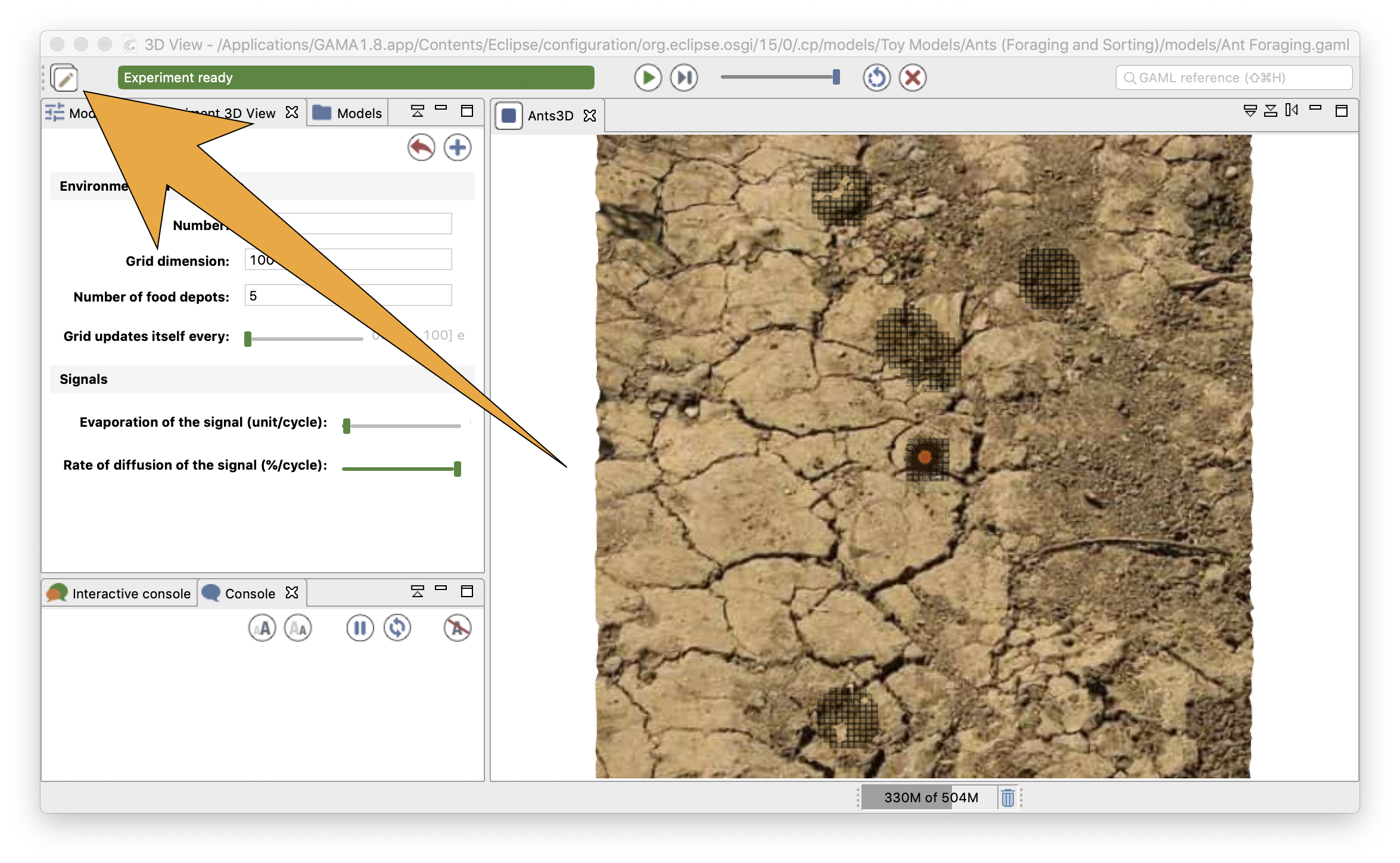-
Notifications
You must be signed in to change notification settings - Fork 99
ExperimentsUserInterface
As soon as an experiment is launched, the modeler is facing a new environment (with different menus and views) called the Simulation Perspective). The Navigator is still available in this perspective (below the parameter view), though, and it is still possible to edit models in it, but it is considered as good practice to use each perspective for what it has been designed for: editing models in the Modeling perspective and running simulations in the Simulation perspective. Switching perspectives is easy. The small button in the top-left corner of the window allows to switch back and forth the two perspectives.

The actual contents of the simulation perspective will depend on the experiment being run and the outputs it defines. The next sections will present the most common ones (inspectors, monitors and displays), as well as the views that are not defined in outputs, like the Parameters or Errors view. An overview of the menus and commands specific to the simulation perspective is also available.
- Installation and Launching
- Workspace, Projects and Models
- Editing Models
- Running Experiments
- Running Headless
- Preferences
- Troubleshooting
- Introduction
- Manipulate basic Species
- Global Species
- Defining Advanced Species
- Defining GUI Experiment
- Exploring Models
- Optimizing Model Section
- Multi-Paradigm Modeling
- Manipulate OSM Data
- Diffusion
- Using Database
- Using FIPA ACL
- Using BDI with BEN
- Using Driving Skill
- Manipulate dates
- Manipulate lights
- Using comodel
- Save and restore Simulations
- Using network
- Headless mode
- Using Headless
- Writing Unit Tests
- Ensure model's reproducibility
- Going further with extensions
- Built-in Species
- Built-in Skills
- Built-in Architecture
- Statements
- Data Type
- File Type
- Expressions
- Exhaustive list of GAMA Keywords
- Installing the GIT version
- Developing Extensions
- Introduction to GAMA Java API
- Using GAMA flags
- Creating a release of GAMA
- Documentation generation